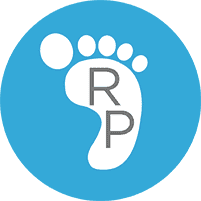
When you suffer a sports injury, Dr. Patel can help. At his practices in Flushing and Nomad, NY, Dr. Patel can work with patients from throughout New York City to create a personalized treatment program to treat sports injuries and ensure peak performance.
request an appointmentWhat are the Most Common Foot and Ankle Sports Injuries?
Sports injuries affect the foot and ankle and can occur when partaking in any type of athletic or sports activity where there is a risk of trauma or atypical stress to the area The most commonly experienced injuries include:
- Achilles ruptures
- Broken toes
- Bruised heels
- Bunions
- Calcaneal fracture
- Dislocated toes
- Fractured metatarsals
- Jones Fractures
- Midtarsal joint sprain/Lisfranc dislocation
- Plantar fasciitis
- Plantar plate injuries
- Stress fractures
- Tendonitis/tendon ruptures
- Turf Toe
Several injuries can be prevented or reduced when athletes adhere the recommendations of the podiatrist. Wearing the proper shoes, strengthening the muscles around the joint and stretching and warming up appropriately can aid in many impediments.
When Should I See a Podiatrist?
If you are experiencing any of the following issues or symptoms you should make an appointment to see Dr. Patel for diagnosis and treatment
- Severe swelling
- Great discomfort, especially when walking
- Unable to perform typical everyday tasks after 3 days
- Sensations of pins and needles or loss of feeling in the foot or ankle
If you have employed the RICE therapy of rest, ice, compression, and elevation to address the injury without significant results and are either unable to walk after 3 days or the pain is not reducing, you should see a doctor. Additionally, if weakness persists for longer than 14 days you should also come in.
What Treatments Are Used for Sports Injuries?
Generally, Dr. Patel will order X-rays and may order a CT scan or an MRI so that he can see the inner workings of the injured body part to properly diagnose and determine treatment. Non-surgical treatments usually used include:
- An immobilizing boot may be employed.
- Resting the foot and applying ice regularly while elevating the appendage can help mild to moderate injuries heal.
- NSAID pain medications such as ibuprofen can be utilized to minimize swelling as well as prescribed pain relievers.
Physical therapy is recommended once the acute phase of the injury has passed to regain peak performance. Some conditions such as fractures or significant tendon ruptures might require surgery. You can be sure Dr. Patel will be there to take care of you and guide you every step of the way!
